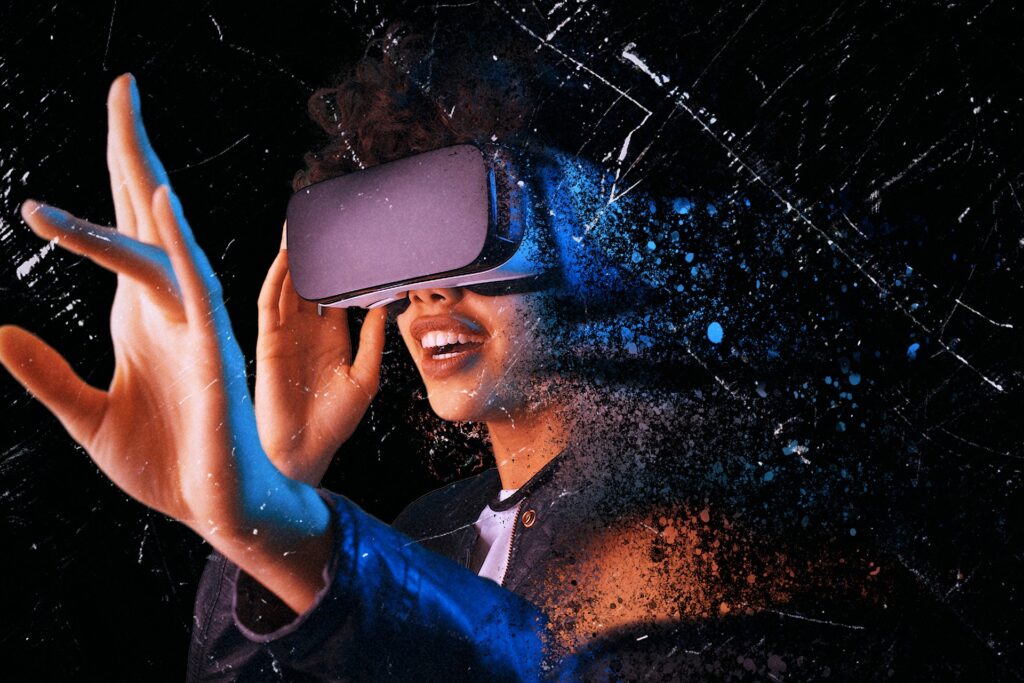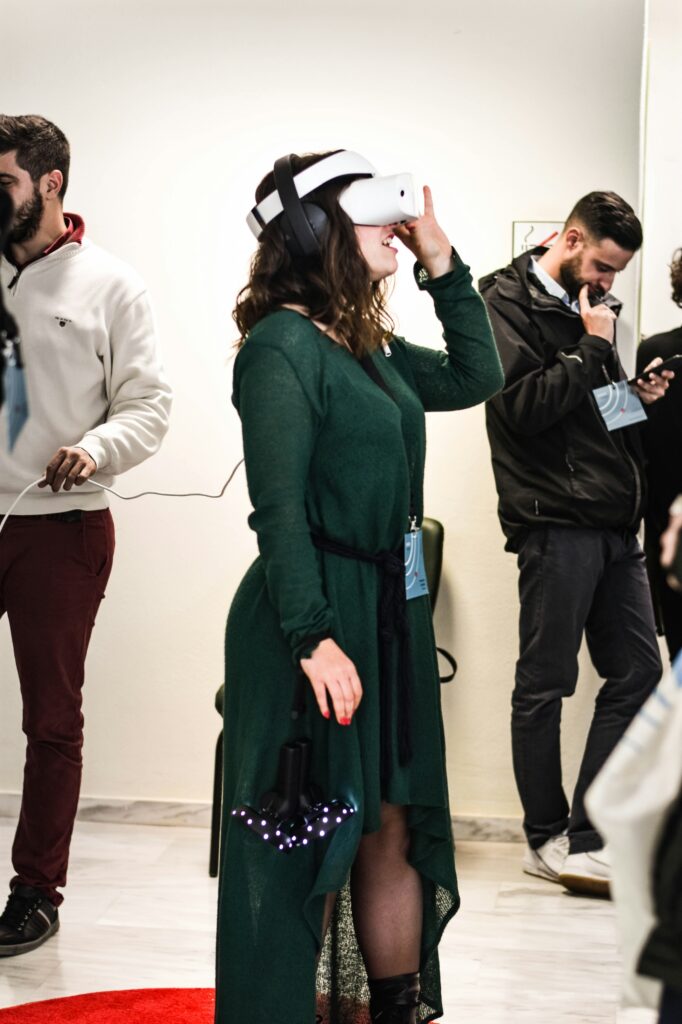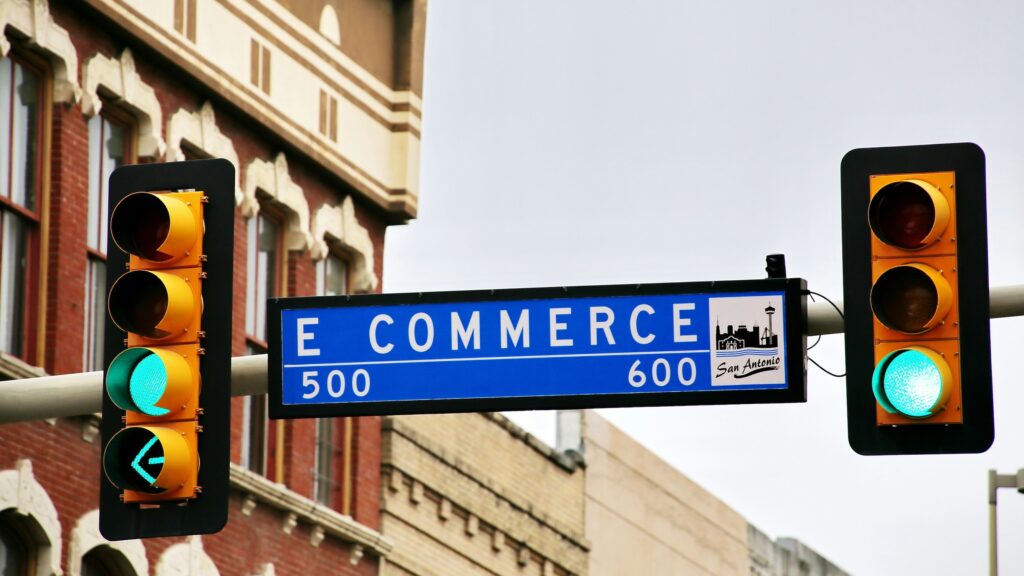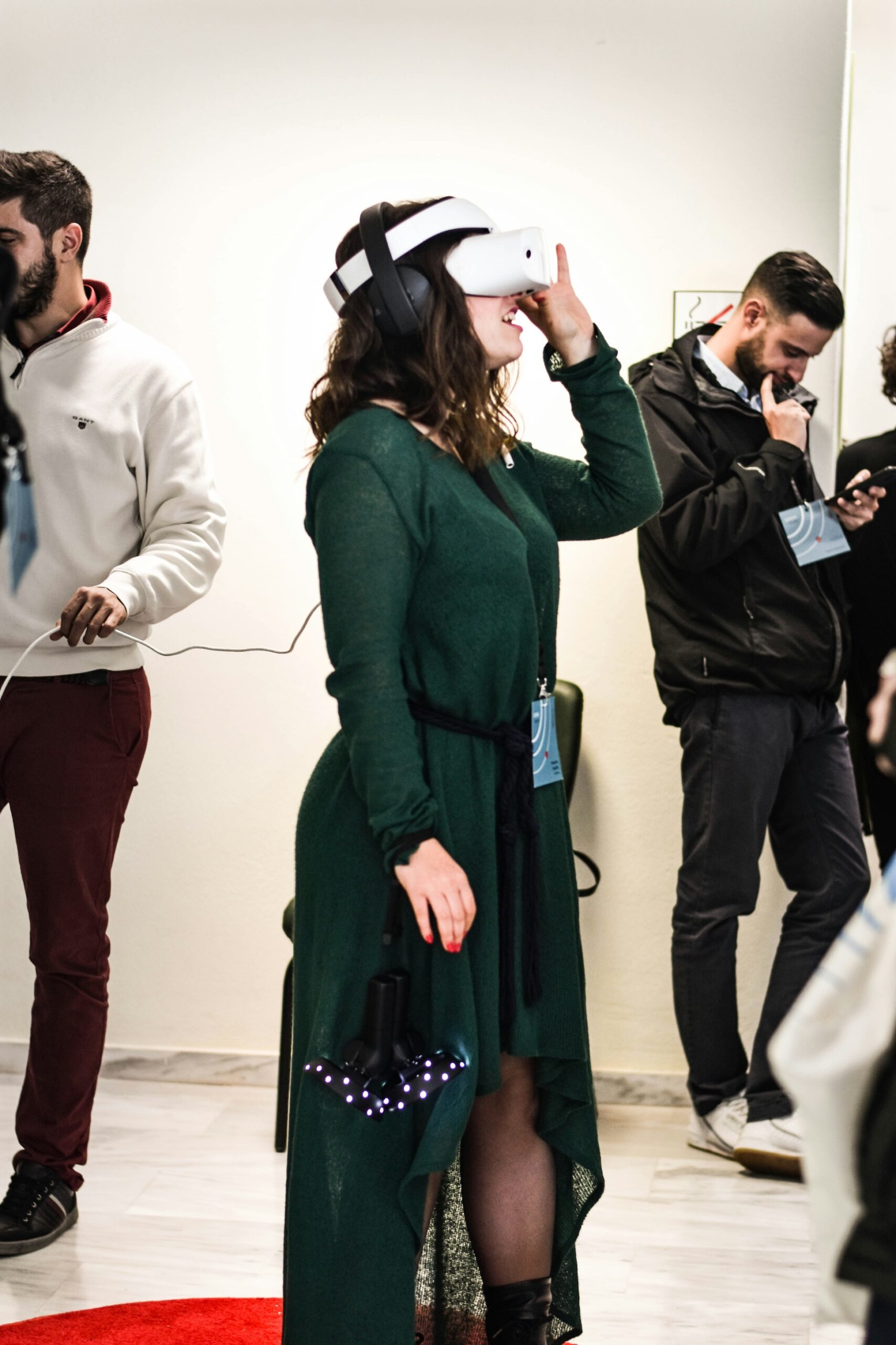In the realm of online shopping, a new frontier is rapidly gaining ground, promising to bridge the gap between virtual carts and physical products. Augmented Reality (AR) and Virtual Reality (VR) technologies are reshaping the e-commerce landscape, offering a glimpse into a future where trying before buying isn’t just possible—it’s expected.
This transformation heralds a seismic shift in consumer behavior, significantly reducing the hesitation and uncertainty that have long been associated with online shopping.
But what does this immersion really entail, and how is it changing the game for retailers and consumers alike?

The genesis of immersion in
E-commerce
The journey into immersive e-commerce isn’t a sudden leap but a gradual evolution, propelled by technological advancements and changing consumer expectations. As digital natives become a larger portion of the consumer base, their desire for online experiences that mimic the tactile engagement of in-store shopping has driven innovation forward. Enter AR and VR, technologies that have been around in various forms for years but are now finding practical, scalable applications in the retail world.
How AR and VR are changing the shopping experience
Augmented Reality (AR) integrates digital information with the user’s environment in real time. Unlike VR, which creates a wholly artificial environment, AR uses the existing environment and overlays new information on top of it. For shoppers, this means being able to see how a piece of furniture would look in their living room or how a pair of glasses would fit their face before making a purchase decision.
Virtual Reality (VR), on the other hand, immerses users in a fully digital environment. This can be particularly engaging for exploring larger items or environments, like taking a virtual tour of a home you might be furnishing or walking through a digital mall populated with products from your favorite brands.
The benefits of AR and VR for consumers and retailers?
For consumers, the appeal of AR and VR in e-commerce is multifaceted. It offers the convenience of online shopping with the confidence of in-store purchases. By reducing the guesswork associated with how products will look, feel, or fit in real life, AR and VR can decrease return rates, saving time and frustration for both shoppers and retailers.
Retailers, in turn, benefit from the enhanced engagement and higher conversion rates that immersive experiences can foster. According to a 2023 report by Gartner, a market research firm, AR and VR technologies are expected to increase online shopping conversion rates by up to 40%. Additionally, a study published in the Journal of Business Research highlights how AR fitting rooms have reduced return rates by 25% for participating retailers. This enhanced engagement not only sets brands apart in a crowded market but also deepens customer loyalty and potentially increases average order values. Moreover, these technologies can collect valuable data on customer preferences and behaviors, informing product development and marketing strategies.

Overcoming challenges and looking ahead
Despite the promise, integrating AR and VR into e-commerce isn’t without its challenges. High development costs, technological limitations, and the need for consumer education on using these new shopping tools are significant hurdles. However, as technology advances and becomes more accessible, these barriers are expected to diminish.
Looking ahead, the potential for AR and VR in e-commerce extends far beyond simple product visualization. From virtual fitting rooms and interior design to gamified shopping experiences, the possibilities are as vast as the imagination of retailers and developers. As we push the boundaries of what online shopping can be, it’s clear that immersive technologies will play a pivotal role in defining the future of retail.
Embracing the future
As we venture further into this brave new world of e-commerce, it’s evident that AR and VR are not just passing trends but foundational elements of the next shopping revolution. For retailers, staying ahead of the curve will mean not just adopting these technologies but innovating with them to create unique, engaging shopping experiences that resonate with the modern consumer.
For shoppers, the promise of a more interactive and confidence-inspiring online shopping experience is an exciting prospect, one that may soon render the traditional e-commerce experience a relic of the past. As we continue to explore and expand the boundaries of what’s possible in digital retail, stay tuned for more insights and updates on this and other trends shaping our world. The future of shopping isn’t just coming; it’s here, and it’s more immersive than ever.

As the digital horizon expands, the integration of AR and VR into e-commerce signals not just an upgrade but a complete overhaul of the shopping paradigm. This isn’t merely about enhancing visuals or adding a layer of interactivity; it’s about redefining the essence of customer engagement and satisfaction. The immersive digital environment these technologies offer goes beyond traditional displays, allowing customers to experience products in a dynamic, personalized context. This leap forward empowers consumers with unparalleled decision-making confidence, fostering a deeper connection between brands and their audiences. As we embrace this new era, the blend of physical and digital realities promises to unlock innovative avenues for creative expression and commercial growth, ensuring that the future of e-commerce is not only immersive but also infinitely more human-centric.
Standing at the threshold of a transformative period, it’s clear that the realms of augmented and virtual reality hold untold potential for the e-commerce sector. The journey from novelty to necessity for AR and VR in online shopping is a testament to our unending quest for more immersive, interactive, and satisfying retail experiences. This evolution not only challenges traditional retail models but also opens up a world of opportunities for brands to connect with their customers in deeply personal and engaging ways.
The path forward is not without its hurdles, but the potential rewards for consumers and retailers alike promise to redefine our understanding of what it means to shop online. The future of e-commerce is here, and it invites us to see, feel, and experience products in ways we’ve only just begun to imagine.
For more insightful readings and the latest updates on e-commerce trends, keep an eye on our blog. Together, let’s explore the innovations that are transforming how we shop, one virtual experience at a time.

